Discover life in a North East town during the 1950s.
Welfare Hall
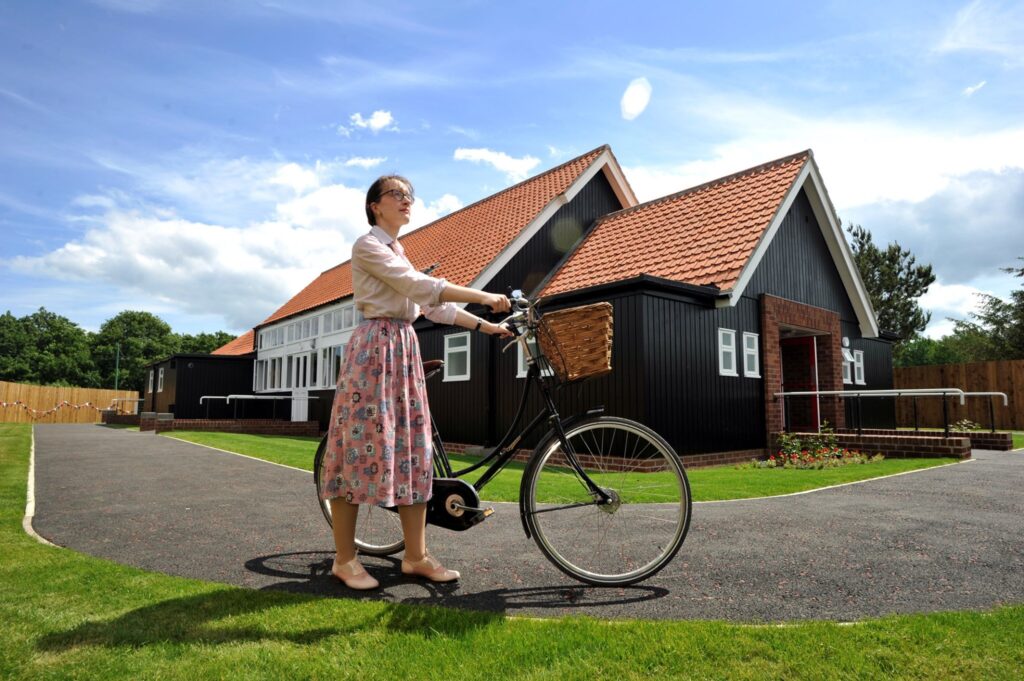
Experience the excitement and community spirit of the 1950s in our 1950s welfare hall, the first building to open as part of our 1950s Town. The hall is a replica of the Leasingthorne Colliery Welfare Hall and Community Centre, built near Bishop Auckland in 1957. Visitors can enjoy activities in the main hall, and find out about the story of the NHS and baby clinics in the exhibit.
The hall also features Changing Places facilities, including a wash and dry toilet, hoist, changing bench and adjustable basin.
Coronation Park and Recreation Ground
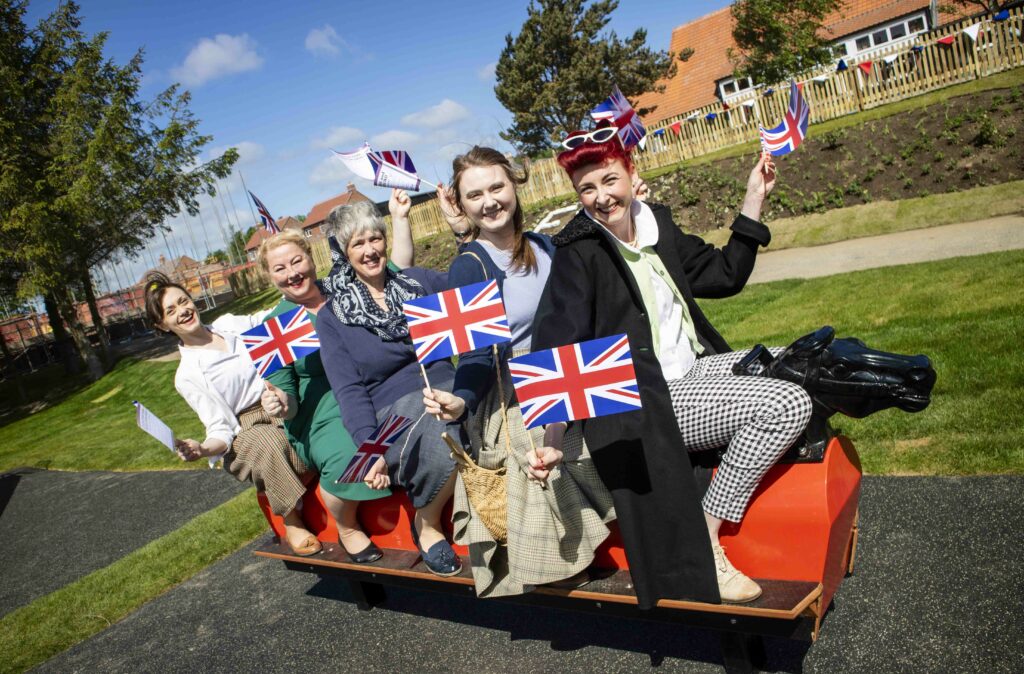
Named in honour of Queen Elizabeth II, Coronation Park and Recreation Ground includes a 1950s-style playground, miniature golf course, sandpit, giant draughts board and football area.
Our park is inspired by the facilities found across the region in the 1950s and by photographs, stories and equipment from the era. The park includes a sandpit, swings, an accessible swing seat, a high slide, a wheelchair accessible roundabout, rocking horse, climbing frame and a rota web climber, a nod to the 1950s witches hat.
Visitors can enjoy a round of miniature golf during their visit to the museum! The 9-hole mini golf course features obstacles inspired by locations and things from, in or about the North East including High Force, Sycamore Gap, the Tyne Bridge, and the Blaydon Races. Mini golf costs £2.50 per person (under 5s free).
The Recreation Ground is a grassed football area inspired by grassroots sports, the existence of longstanding and recently created recreational facilities that were found in communities across the country in the 1950s. You can practice your football skills before taking a look in the football shed which contains objects relating to football in the 1950s with a focus on amateur football in County Durham.
Bowling Green and Pavilion
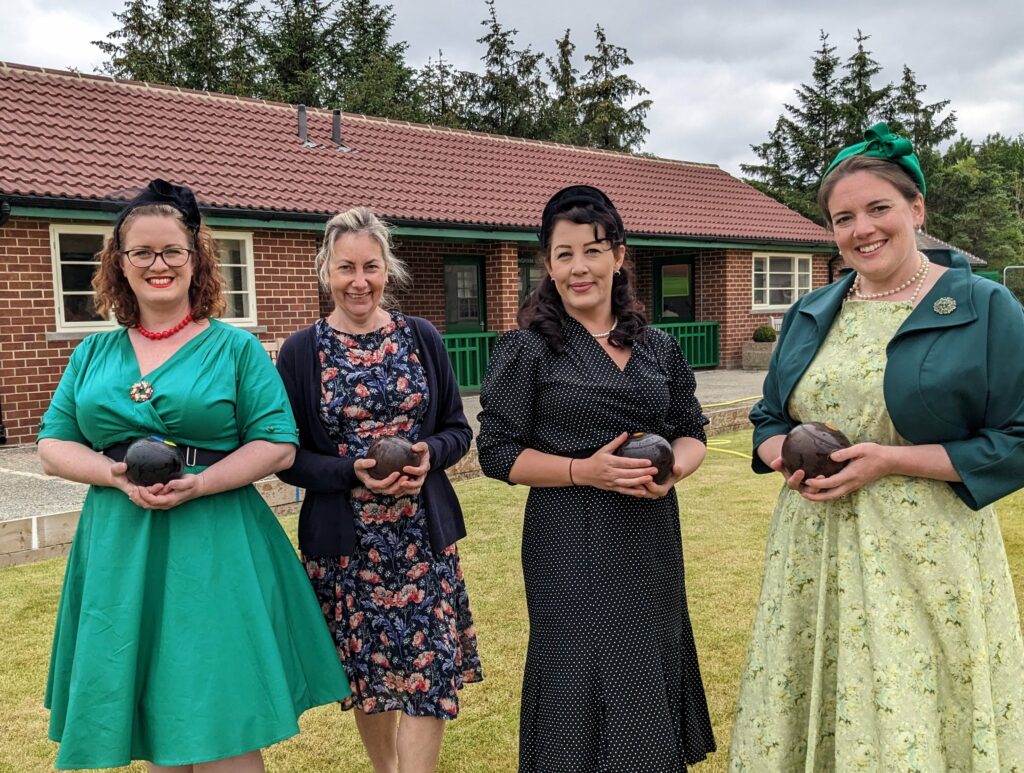
A bowling green has been replicated at Beamish, to help tell the story of leisure pursuits and community life in the 1950s.
The replica of Billingham Bowling Green from John Whitehead Park has been built as part of the park in The 1950s Town.
Bowls was, and often still is, a popular pastime, and was especially popular for both men and women during the 1950s.
Police Houses
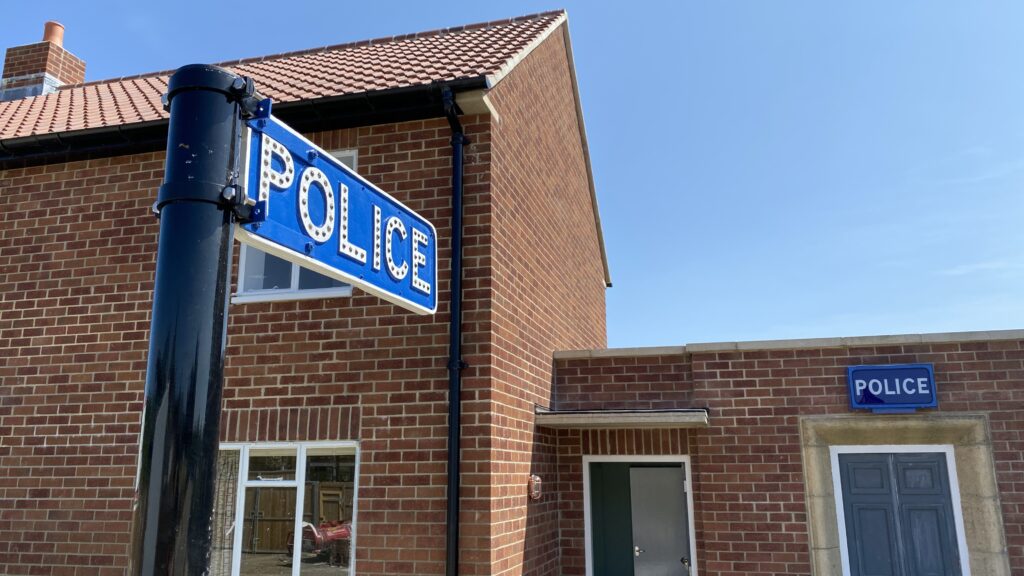
A pair of police houses from Heworth, Gateshead, and their associated single-storey office, has been replicated at Beamish.
Visitors to the police houses will be able to see the differences in domestic life between a sergeant and a constable. Visitors will also be able to experience the daily routine of an officer, help to patrol his beat and call in any suspicious activity from the public telephone, and even respond to crimes around the town.
Semi-detached Houses
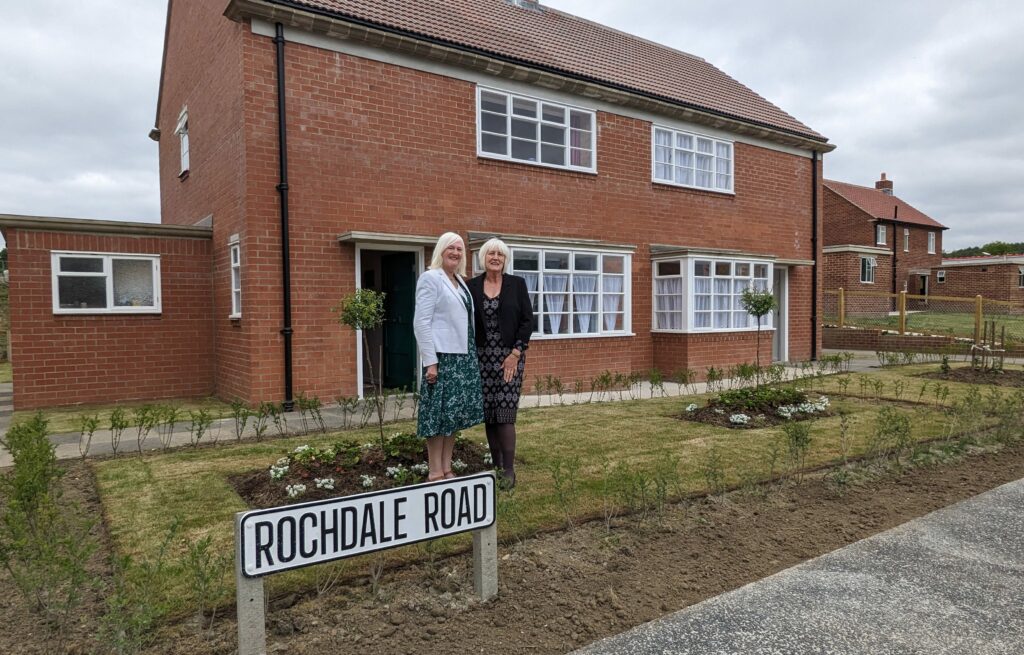
As part of The 1950s Town, we have replicated a pair of semi-detached houses from Red House in Sunderland.
Visitors to the semi-detached council houses will be able to learn about the expansion of housing in the 1950s and what life on a new housing estate was like.
45 Rochdale Road
The Remaking Beamish Team worked closely with Esther and her daughters, Linda and Brenda, gathering memories of their time living in the house.
47 Rochdale Road
In the second of the semi-detached houses, we’ll be telling the story of Polish migration to the North East in the 1950s.
Aged Mineworkers’ Homes
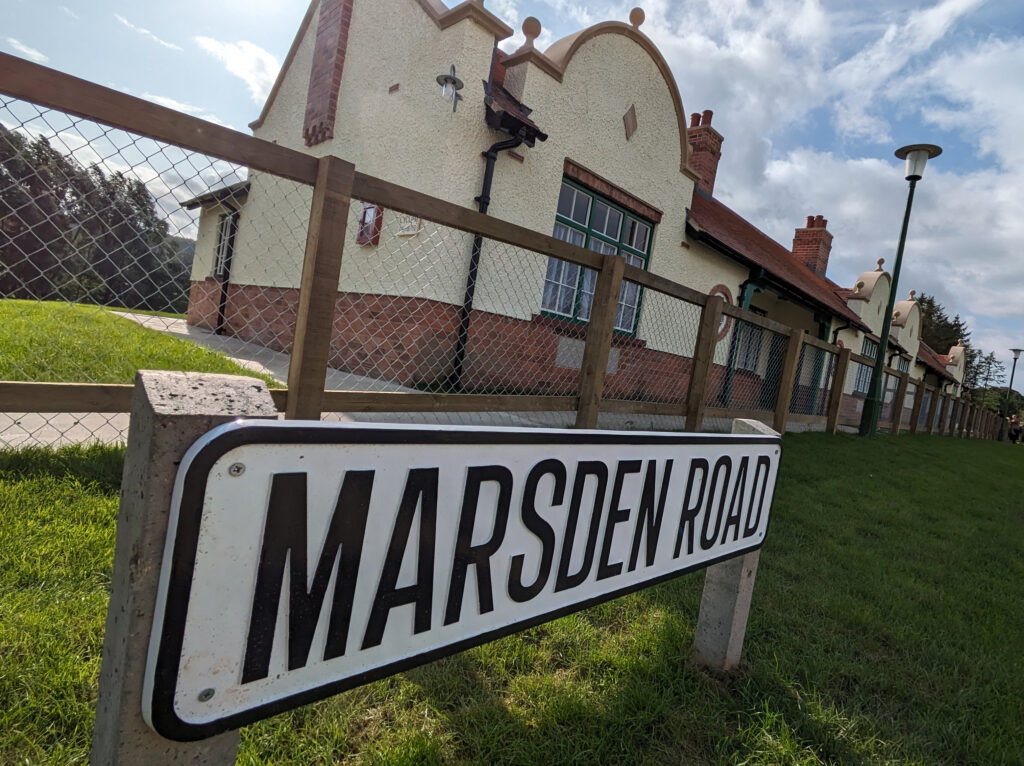
The 1950s aged mineworkers’ homes provide a space for innovative work with people living with dementia and other long-term health conditions.
The facilities, in a replica of cottages from Marsden Road, South Shields, provide a home for the museum’s inspirational Health and Wellbeing Team.
The team runs activities for people living with dementia and long-term health conditions, as well as to help with mental health, loneliness and isolation. The new facilities, known as Clover Cottage, will allow the team to expand its acclaimed work, reaching people with a wider range of health needs.
The remaining two aged mineworkers’ homes in the terrace, allow visitors to see what life was like for the region’s retired miners in the 1950s.
1950s Front Street terrace
John’s Café
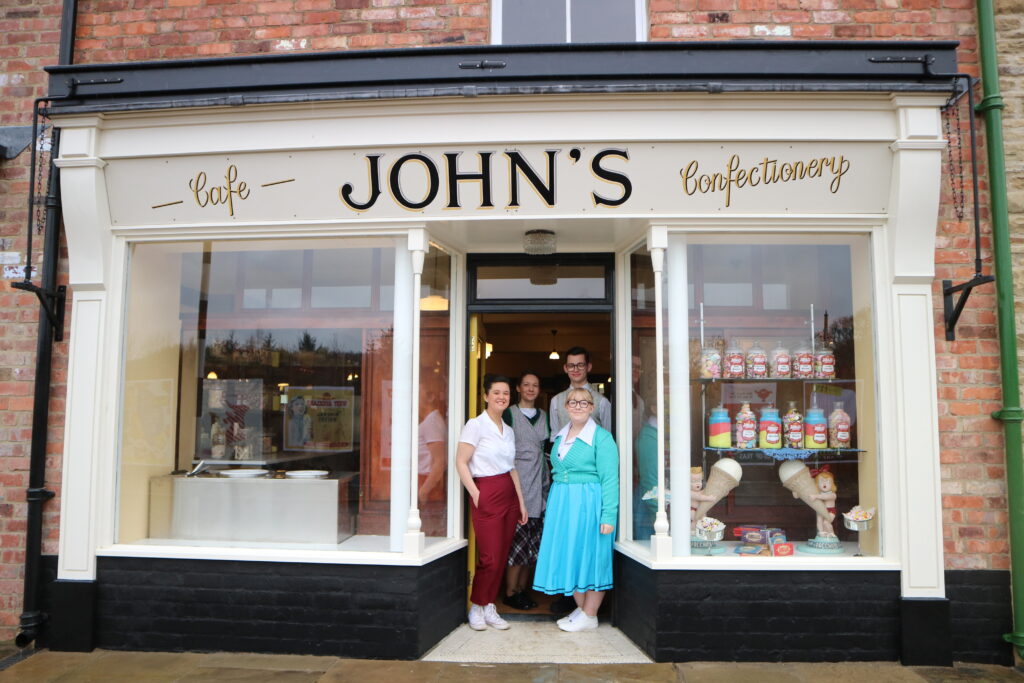
Visitors can enjoy an ice cream and other traditional treats while listening to 50s tunes on the jukebox at John’s Café, a recreation of the popular café from Wingate in County Durham. The café was owned by Giovanni Baptista Parisella, known locally as John, who was of Italian descent.
The menu includes ice cream made in the café, as well as other 1950s favourites including hot Bovril and hot Vimto.
No. 2 Front Street
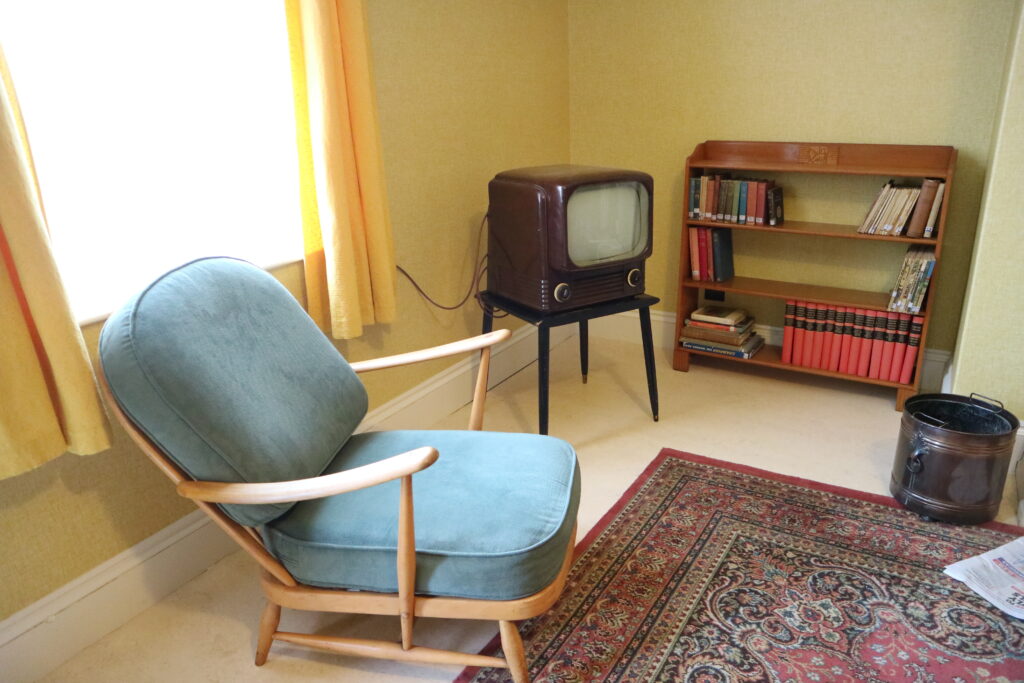
The home of Norman Cornish has been recreated, telling the story of the celebrated North East artist and the Spennymoor Settlement. Beamish has been working with Norman’s family on recreating the house from Bishop’s Close Street in Spennymoor.
Upstairs in the exhibit is an accessible art space with lift, where visitors and groups will be able to take part in arts activities.
Elizabeth’s Hairdresser’s
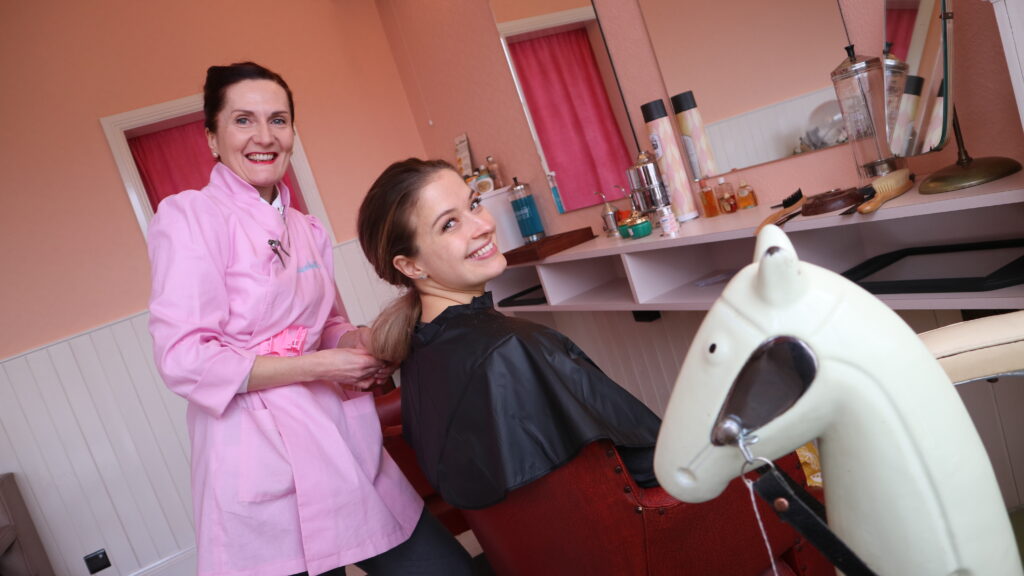
![]() Visitors can look the part by getting a 1950s hairstyle in Elizabeth’s Hairdresser’s, and take their photo under dryers from Beamish’s collection. Elizabeth’s is based on an end-terrace shop from Bow Street in Middlesbrough.
Visitors can look the part by getting a 1950s hairstyle in Elizabeth’s Hairdresser’s, and take their photo under dryers from Beamish’s collection. Elizabeth’s is based on an end-terrace shop from Bow Street in Middlesbrough.
Visitors can book an appointment at the salon on the day of their visit on a first come, first served basis, and cost £5.
Middleton’s Quality Fish and Chips
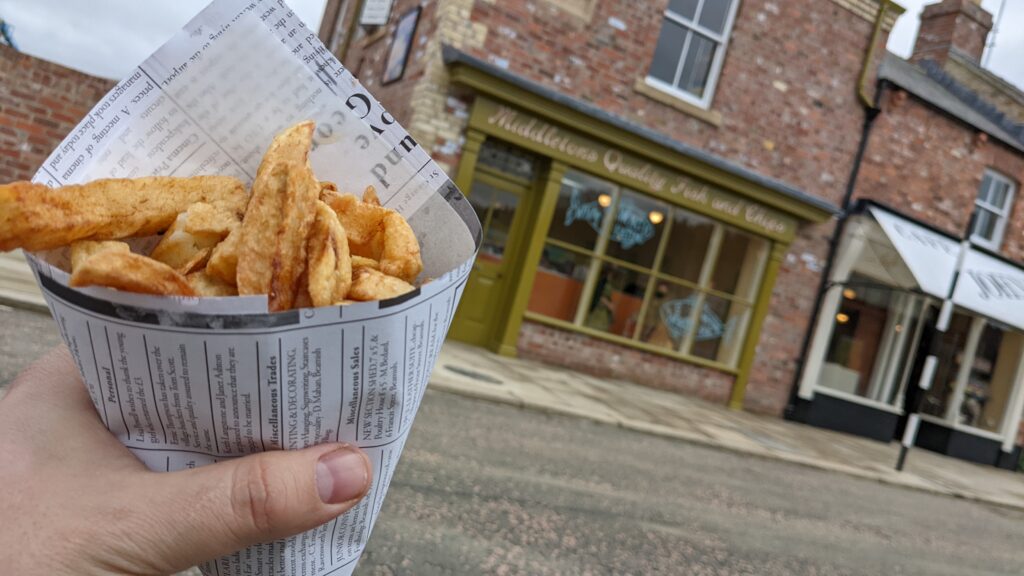
Visitors can treat themselves to a delicious taste of the 1950s with our new chip shop which is a replica of a shop from Middleton St George, near Darlington.
Beamish has worked with the community of Middleton St George to create a 1950s-style newspaper on specially-printed paper that is used to wrap the fish and chips.
A vegetarian chip offer is available on request.
More exhibits to follow!
You can find out more about the exhibits listed above, as well as the rest of our Remaking Beamish plans, over on our Remaking Beamish Blog.
Thanks to money raised by National Lottery players, the Remaking Beamish project was awarded £11.8m by The National Lottery Heritage Fund – a major milestone in Beamish’s history and the largest investment ever seen at the museum.
